Related Research Articles

Peter Weibel was an Austrian post-conceptual artist, curator, and new media theoretician. He started out in 1964 as a visual poet, then later moved from the page to the screen within the sense of post-structuralist methodology. His work includes virtual reality and other digital art forms. From 1999 he was the director of the ZKM Center for Art and Media Karlsruhe.

Harald Szeemann was a Swiss curator, artist, and art historian. Having curated more than 200 exhibitions, many of which have been characterized as groundbreaking, Szeemann is said to have helped redefine the role of an art curator. It is believed that Szeemann elevated curating to a legitimate art form itself.

Uwe Wittwer is a Swiss artist. He lives and works in Zürich, Switzerland. The media he uses include watercolor, oil painting, inkjet prints and video.

Sislej Xhafa is a Kosovar contemporary artist, based in New York.
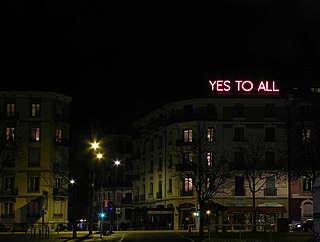
Sylvie Fleury is a Swiss contemporary pop artist known for her installations, sculpture, and mixed media. Her work generally depicts objects with sentimental and aesthetic attachments in consumer culture, as well as the paradigm of the new age, with much of her work specifically addressing issues of gendered consumption and the fetishistic relationships to consumer objects and art history.

Julian Rosefeldt is a German artist and film-maker. Rosefeldt's work consists primarily of elaborate, visually opulent film and video installations, often shown as panoramic multi-channel projections. His installations range in style from documentary to theatrical narrative.
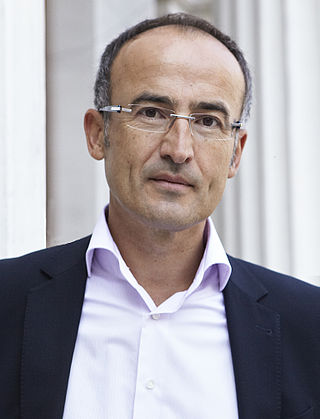
Tobias G. Natter is an Austrian art historian and internationally renowned art expert with a particular expertise in "Vienna 1900".

Vittorio Magnago Lampugnani is an architect, architectural theorist and architectural historian as well as a professor emeritus for the History of Urban Design at the Swiss Federal Institute of Technology Zurich. He practices and promotes a formally disciplined, timelessly classic, and aesthetically sustainable form of architecture, one without modernist or postmodernist extravagances. As an author and editor of several acclaimed works of architectural history and theory, his ideas are widely cited.
Anna Blume and Bernhard Johannes Blume were German art photographers. They created sequences of large black-and-white photos of staged scenes in which they appeared themselves, with objects taking on a "life" of their own. Their works have been shown internationally in exhibitions and museums, including New York's MoMA. They are regarded as "among the pioneers of staged photography".
Karin Sander is a German conceptual artist. She lives and works in Berlin and Zurich.
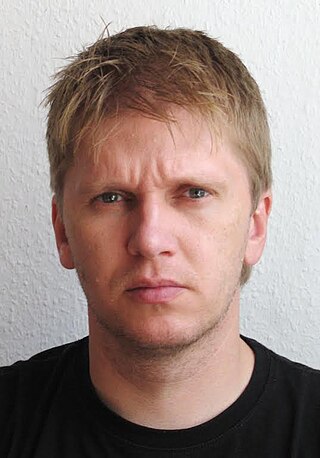
Roman Ondak is a Slovak conceptual artist.
Christian Georg Kerez is a Swiss architect, architectural photographer and professor.
Frantiček Klossner is a Swiss artist based in Bern, known for creating video art, installations, performance, drawings and visual poetry.
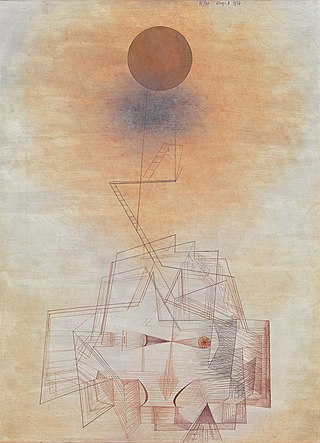
Limits of Reason is a 1927 painting by Paul Klee (1879-1940). It is in the permanent collection of the Pinakothek der Moderne—Pinakothek of modern art—in central Munich's Kunstareal.
Wolfgang Kermer is a German art historian, artist, art educator, author, editor, curator of exhibitions, art collector and professor. From 1971 to 1984 he was repeatedly elected Rector of the State Academy of Fine Arts Stuttgart and thus the first scientific and at the same time youngest teacher in this position in the history of the university. Under his rectorate, the State Academy of Fine Arts Stuttgart was reformed in 1975 and 1978 on the base of two new university laws of the State of Baden-Württemberg and thus, for the first time in its history, authorized to set up diplomas for all courses. One of the accents of his work was the promotion of talented graduates of the academy: In 1978 he organized the first of the so-called ″debutant exhibitions″, an ″unconventional contribution to the promotion of young people″, supported financially by the State of Baden-Württemberg.

Rolf Dieter Lauter is a German art historian, curator and art advisor.
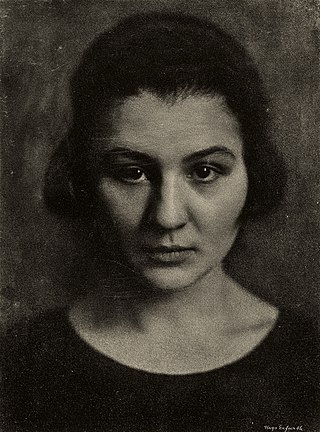
Martha Dix was a German goldsmith and silversmith, as well as the wife of the painter Otto Dix. She was portrayed many times by her husband from 1921 to 1933. A well-known double portrait of the couple appears in the photographer August Sander's portfolio People of the 20th Century (1925).
Silvia Eiblmayr is an Austrian art historian and curator.

Niklaus Stoecklin was a Swiss painter and graphic artist. He is regarded as a Swiss exponent of New Objectivity and Magic Realism, and at least with his early works numbers among their international co-founders. He was also a poster designer of international renown.

Marta Astfalck-Vietz was a German photographer, social worker and painter associated with the Bauhaus movement. She is remembered for her pioneering series of self-portraits from around 1930. As well as Ilse Bing, Lotte Jacobi, Marianne Breslauer, Germaine Krull, and Lucia Moholy she produced modernist images and portraits across the fields of avant-garde and commercial production, photojournalism, and fashion. Her works were rediscovered in 1991.
References
- ↑ Christoph Doswald: „Kunst ist paradoxerweise oft die Speerspitze urbaner Transformationsprozesse“. Globalisierte Sprachlichkeit trifft auf lokale Prozesse, Kunstforum International, volume 212, 2011, title: res publica 2.0, p. 136.
- ↑ Christoph Doswald: Flankierende Maßnahmen, emotionale Kampagnen. Beobachtungen zum Werk „Mae West“ von Rita McBride u.a., Kunstforum International, volume 214, 2012 title: Prozent Kunst, p. 110.
- ↑ Christoph Doswald: ART AND THE CITY. Über die Wechselwirkungen von Kunst und Stadt, Kunstforum International, volume 218, 2012, title: Der urbane Blick, p. 48.
- ↑ Zur Lage der Kunstkritik. Grundlagen, Befragungen, Vertiefungen. Edited by Paolo Bianchi and Christoph Doswald, Kunstforum International, volume 221, 2013, title: Zur Lage der Kunstkritik, p. 30.
- ↑ Christoph Doswald: Multifunktionaler Kakaosack., Neue Zürcher Zeitung, 28 March 2001.
- ↑ N.N.: Christoph Doswald nimmt den Hut SonntagsZeitung, 6 May 2008.
- ↑ de:Regionalfonds für zeitgenössische Kunst [ circular reference ]
- ↑ Website Maria Marshall.
- ↑ „Urs Bühler: Im Dienst des Hafenkrans und der Skelette. Christoph Doswald hat sich als Leiter der Züricher Arbeitsgruppe für Kunst im öffentlichen Raum für kontroverse Projekte starkgemacht“, Neue Zürcher Zeitung vom 18. Januar 2021.
- ↑ Dialogangebote im urbanen Leben. Gabrielle Spiller über die Kunst im öffentlichen Zürcher Raum, Kunstzeitung of October 2017.
- ↑ https://www.stadt-zuerich.ch/ted/de/index/departement/medien/medienmitteilungen/2009/juli/090727a.html Press release from the City of Zurich, Department of Civil Engineering and Waste Disposal (TED), 27 July 2009.
- ↑ N.N.: Kunst und öffentlicher Raum, Website der Stadt Zürich, Tiefbau- und Entsorgungsdepartment, last accessed on 10 December 2017.
- ↑ Interview with Christoph Doswald by Urs Steiner: "Wir wollen Kunst zu den Menschen bringen", Neue Zürcher Zeitung, 24 May 2011.
- ↑ "Artandthecity.info | Hallo, diese Domain wurde gerade bei Hostpoint gekauft". Archived from the original on 7 January 2018. Retrieved 8 March 2018.
- ↑ Timm Engster: Zürich pflanzt Kunst in die Stadt, TagesWoche, Basel, 6 June 2012.
- ↑ Iwona Eberle: Kunst für den Westen. Interview with Christoph Doswald, Tages-Anzeiger, Zurich, 20 June 2012.
- ↑ Jürg Rohrer: Vierkantrohre sind tiefgründig. Das Zürcher Freiluftfestival Art and the City ist zu Ende; es hat einem nachhaltig die Augen geöffnet., Tages-Anzeiger, Zurich, 1 October 2012.
- ↑ VernissageTV: Art and the City: Public Art Festival in Zurich, Switzerland, huffpost, 6 October 2012.
- ↑ Urs Bühler: «Kunst ist in der Regel nicht mehrheitsfähig». Interview with Christoph Doswald, Neue Zürcher Zeitung, 18 December 2009.
- ↑ Paolo Bianchi: Der Hafenkran oder: Wie Kunst Geschichten ins Gedächtnis der Menschen brennt. An email dialogue with Christoph Doswald, Chairman of the City of Zurich's Work Group for Art in Public Spaces, Kunstforum International, volume 226, 2014, Kunstforum-Gespräche, p. 326.
- ↑ N.N.: Die Heftigkeit überraschte alle, Tages-Anzeiger, Zurich, 14 January 2015.
- ↑ Urs Siegrist (Moderator): Christoph Doswald - Hafenkran oder Hafenkäse?, Radio SRF, 14 April 2014.
- ↑ Vortragsankündigung der Muthesius Kunsthochschule, N.N.: "Kampfzone öffentlicher Raum", lecture by Christoph Doswald, Muthesius University of Fine Arts and Design, Kiel, 26 November 2015.
- ↑ Christoph Doswald: Kampfzone öffentlicher Raum, oökulturquartier, Linz, November 2015.
- ↑ "Home". abk-stuttgart.de.
- ↑ Prix Visarte, Die Jury, accessed on 8 December 2017
- ↑ Infopage of Stiftung Kulturweg Limmat [http://kulturweg-limmat.ch/info.html Archived 11 December 2017 at the Wayback Machine
- ↑ Ursula Burgherr: Stiftungs-Präsident Christoph Doswald: «Topkunst gibt es auch an der Peripherie», az Aargauer Zeitung, 16 November 2016.
- ↑ Susanne Koeberle: Wenn Blicke Landschaften erzeugen. Swiss Architects Magazine 25 May 2023
- ↑ Sabine B. Vogel: Sehnsucht nach Golfspielen im Skulpturenpark. Vienna: Die Presse, 10. Dezember 2023
- ↑ https://www.industrialartbiennale.eu/iab_04/iab04-guide/
- ↑ Sibylle Egloff: «In Krisenzeiten ist ein regionales Kulturangebot wichtig». Christoph Doswald betreut für die Regionale Projektschau das Projekt «Art Flow», welches das Limmattal künstlerisch neu beleben soll. Limmattaler Zeitung vom 15. Januar 2022
- ↑ "Münsterhof in Zürich: Neuer Stadtpark blüht auf, für kurze Zeit".
- ↑ "Wir sind erschöpft von Krisen und Katastrophen. Und das Paradies ist sowieso verloren. | NZZ".